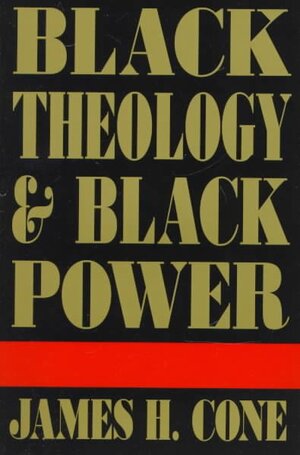By request from @marxisthayaca.
Having fucked around, on 18th August 1862, 159 year ago today, Andrew Jackson Myrick found out. I wasn't able to find much about him personally, other than that he was a merchant taking advantage of a people already driven to desperation by the advance of a genocidal empire. So that's mostly what I'll be writing about. What fun.
Throughout the 1600's and 1700's European colonists spread westward from the east coast of North America, alternately trading with and killing whomever they met. Often both. Tribes in the east were pushed westward, which combined with the introduction of firearms and horses to push tribes to their west even further west. Iroquois expanded into Ojibwe and Potawatomi territory, who were driven into conflict with the Sioux (Dakota and Lakota), who were forced to retreat from the forests of modern-day Wisconsin and northern Minnesota that they'd inhabited for roughly 800 years. They fled to the prairies of southern Minnesota, and North and South Dakota, which are named after them.
The Louisiana Purchase of 1803 transferred France's self-proclaimed legal right to coercively purchase or conquer lands within that region to the United States. In 1805 President Thomas Jefferson ordered Lt. Zebulon Pike to lead an expeditionary force to begin doing so. When Pike encountered the eastern Sioux, he negotiated the purchase of 150 square miles of land along the Mississippi River to establish a military fort in southeastern Minnesota. The United States paid $2000, or about $50,000 now, for "full soveriegnty" over the land. However, the treaty also provided that the Sioux would be allowed to forever continue using the land as they had been, so it's unclear to me that the concept of sovereignty that Pike had in mind was successfully communicated.
Over the subsequent decades, settlers arrived in increasing numbers. A series of treaties from 1825-1830 established peace as well as legal territorial boundaries between the various tribes living in Iowa, Minnesota, Wisconsin, Illinois, and the Dakotas. Official U.S. policy of the time was to discourage intertribal warfare, because peace made it easier to expand westward and forcibly remove the people already living there.
These largely one-sided treaties also established U.S. sovereignty over the entire region, setting the legal framework for continued expansion and further treaties unfavorable to the natives that were clearly made in bad faith and under duress. An early example is the Treaty of St. Louis in 1804, when a few members of the Sauk tribe were sent to negotiate the release of a prisoner being held on murder charges. There they were given enough alcohol to keep them drunk for the duration of their stay. We're told that they agreed to sell off about 15 million acres, all of northwestern Illinois, for the paltry sum of $2000, even though they clearly were not invested by their communities with the authority to do so. The prisoner was released, only to be immediately gunned down in front of them. Sauk leaders, including Black Hawk, after whom the fucking helicopter is named, rightly considered the treaty invalid. In 1832 Black Hawk led a group of men, women, and children onto the "disputed" land and were promptly attacked by a settler militia.
Two decades of nearly constant conflict and encroachment later, Sioux leaders signed the Treaty of Traverse de Sioux in 1851, ceding any control and use of essentially all of their territory in Minnesota to the U.S. government, except for a 20-mile wide strip of land along the Minnesota River, to which they were then confined. For these 24 million acres of land, they were nominally offered $1.65 million, 7 cents per acre, or about $2.50 per acre today. However, they only received 20% as a down payment and were promised interest payments on the remainder over the next 50-years. This was also a cash grab by the U.S., which turned around and sold the land to white settlers for $1.25 per acre, roughly $40 now. Clearly the Sioux felt they had no other choice. During the signing of a similar treaty only 7 years later, Chief Padaniapapi (Struck-by-The-Ree) of the Yankton Sioux told them, "The white men are coming in like maggots. It is useless to resist them. They are many more than we are. We could not hope to stop them. Many of our brave warriors would be killed, our women and children left in sorrow, and still we would not stop them. We must accept it, get the best terms we can get and try to adopt their ways."
And so by the late 1850's, the Sioux of Minnesota and South Dakota had been forced onto small apartheid settlements. They received annual payments, and this was the money that "traders" came to take advantage of, Andrew Myrick and his brother Nathan among them. They would overcharge the tribes for badly needed goods, selling to them on credit. They would then claim payment from the government annuities, which were often late. Even liberal historians note that this practice was highly profitable.
Since they had been forced to give up almost all of the land they had once used for their livelihood, and with the local ecology disrupted or destroyed by white settlers, the tribes became dependent on these payments for their survival, especially after bad harvests and harsh winters such as occurred in 1861. With the start of the U.S. Civil War, and Mary Todd Lincoln having grossly overspent the White House decoration budget, the payments stopped altogether. By 1862 the Dakota were starving, and traders such as Myrick refused to sell to them at all, with Myrick himself telling the Sioux to "eat grass."
A.J. Myrick to Dear Brothers, Lower Sioux Agency, July 26, 1862, U.S. National Archives Record Group 75 Special File 271 probably:
Dear Brothers —
The Lower Indians have been playing the devil in general. They had two secret councils at which they resolved not to pay a dollar of their credits, established a soldiers lodge of one hundred warriors to execute the plan.... we all determined not [to] give any more credit hoping to starve them into a change of sentiment....
[Yesterday] they formed a line of battle, marched to all the stores and made the following... speech “You have said you have closed your stores for 2 Sundays and that we should have to eat grass. We warn you not to cut another stick of wood or to cut our grass,” feeling themselves probably much relieved departed... In their secret council there [were] some intimations that the present traders were to be driven off and someone new to have exclusive control of the trade. Now whether the agent had anything to do with it we can’t find out but it looks very much as if that was the programme.
I am at a loss and so doing have given out no credits since last Sunday and at present deem it best not to give away any more for a week or ten days hoping it will produce a reaction. They will get very hungry and possibly if the officials are not engaged in it they may change their sentiments and favor paying their credits... I have not talked with them yet seeming it best to let them get hungry first hoping they might retract and become decent again.
In August of 1862, Chief Little Crow and a band of a few hundred Dakota warriors resolved to drive Anglo settlers from the region, attacking the Lower Sioux Agency in southwest Minnesota on August 18th, where Myrick and others conducted their racket. Andrew Myrick attempted to escape out the second-story window of the Agency building, but was caught and killed. His body was later found beheaded, his mouth stuffed with grass.
So that's the context that informed the decision someone made to kill this particular otherwise minor historical figure, and in that particular manner. Myrick knew what he was doing, and the position of power he was in while he exploited the Sioux to extract what few remaining resources they had, and when they didn't even have that anymore he deliberately let them starve as a negotiation tactic. Eat grass, you bastard.
The band continued on to attack other settlements in the area, killing and capturing hundreds of people, including children, over the next few weeks and forcing thousands of others to flee. But the victories were short lived. They lacked the strength and numbers to capture forts in the area, and by mid-September the U.S. government was able to send a few thousand newly recruited soldiers, along with artillery, to crush the uprising. Little Crow and the Dakota were decisively defeated at the Battle of Wood Lake on September 23rd. The Dakota had planned to ambush the invaders, but were discovered by chance by a group of foragers that were looking for potatoes, forcing the battle to start before the army regiments had left their fortified camp and ruining the opportunity for an ambush.
In the following weeks, hundreds of Dakota warriors and their families were arrested and given perfunctory military trials, with over 300 sentenced to death. Some of the trials lasted less than 5 minutes. They were completed on November 7th. After some public outcry, mostly from white settlers demanding blood but with a few pushing for leniency, Abraham Lincoln personally reviewed the trial transcripts, ultimately granting clemency to most of those convicted. But not all of them, of course, saying the quiet part out loud to the Senate that he was, "Anxious to not act with so much clemency as to encourage another outbreak."
On December 26th, 1862, 38 people were hanged. In contrast, after the Civil War ended only two Confederates were executed for their war crimes, one of whom commanded a concentration camp.
The remaining Dakota were violently expelled from Minnesota, which began to be resettled by white colonists by the early 1870's. Laura Ingalls Wilder, in her widely beloved Little House on the Prairie book series, merely noted that when she and her family arrived the land was uninhabited.
LAST UPDATE: BABY WAS DISCHARGED YESTERDAY! They told us he was improving and he'll be fine. Momma staying with him until Friday and we got a pediatrician appointment. Thank you all for the kind wishes, good vibes, and prayers. :penguin-love:
Congrats on the good news. Hopefully your child's condition keeps improving!
putting down my perfect angel today. vet said she has liver failure, kidney failure, a GI obstruction, on top of the health issues we already knew about. She was playing and walking with us on Sunday. :agony-deep:
Fox and Friends promoted knock off vax cards this morning. On the air.
Thinking about started a new Salem witch hunt but it's just hexbear users accusing eachother of being chud wreckers in disguise
I have been told while out on the field today that my uncle had passed away from Covid this morning.
Stay safe out there, my dad told me last sunday he had just fallen ill with it.
aaaaaa
Earlier today I commented how I wanted to come out to my doc to start transitioning... turns out I have an appointment tomorrow and not in a few weeks like I previously thought :sicko-no:
It's too soon comrades, my insides are churning. But I think it has to happen. :ohnoes:
Considering whether or not I come out to my doctor and get to transitioning. The thought couldn’t be more frightening but I’m in a friendly environment (in theory) wrt to healthcare, family, and friends and at some point in the near future I’ll have enough cash to start hair removal… Plus school is still remote (and the profs I’m closest to are LGBT) and might still be into next year so I wouldn’t have to deal with some of the awkward phase. I wouldn’t have to hide all the affirming clothes I’ve bought that make me really happy and comfortable. If I was going to do this there hasn’t been a better opportunity… :ohnoes: :cri:
Edit: I think the only thing really holding me back is infertility as a result of hrt and eventually bottom surgery… I kind of want biological kids or at least the option, y’know? I’m way too broke to freeze anything right now.
Morning everybody just woke up. Lot of anti-America vibes in mega today I love it, keep it up
:amerikkka:
death to America? a lot of people are saying it folks!
Fine people, beautiful people! We hate this nasty country don’t we folks?
hey, he also got Hungarian, Romanian, and Bulgarian fash too, and Polish partisan fash
Having fucked around, on 18th August 1862, 159 year ago today, Andrew Jackson Myrick found out.
Bless you for this amazing opening line.
Cops cracked down on the few homeless camps left over. An amount of people that makes me very proud of my city showed up and confronted the cops. Pigs pepper sprayed a 10 year old. It's a shock to most ordinary people who are fully in favor of the camps, a mutual aide org built sheds for the homeless in parks since the city was doing fuck all and now that 'covid is over' they're tearing them down and fining the residents as well as attacking those who showed up to protest.
Found a small praying mantis in my garden :crush: hoping it eats some ants or aphids














